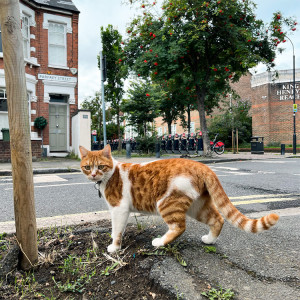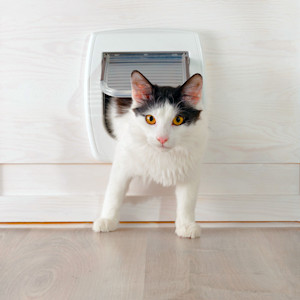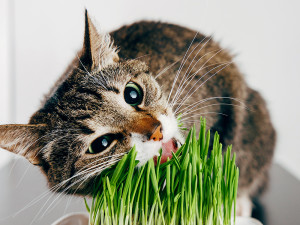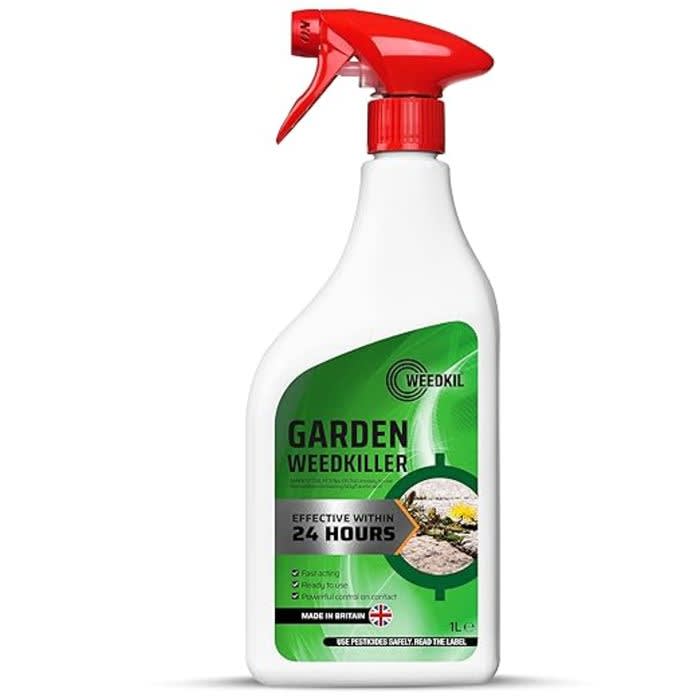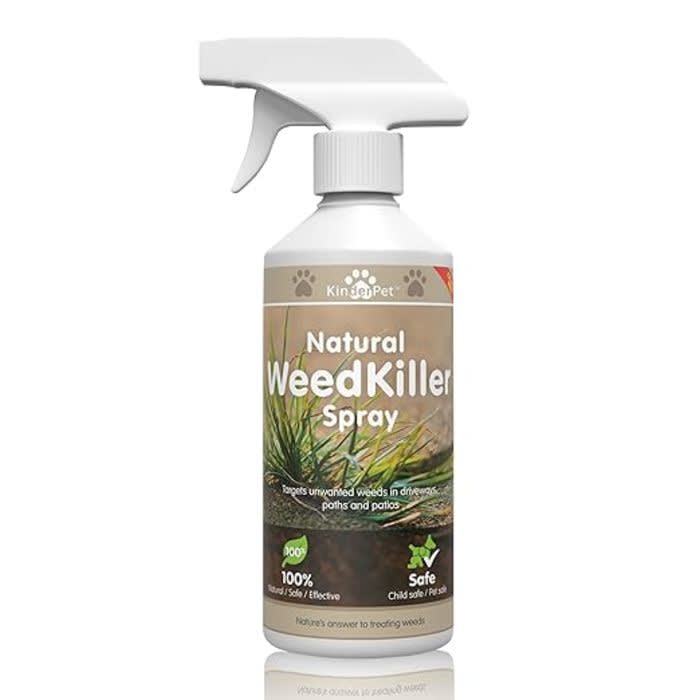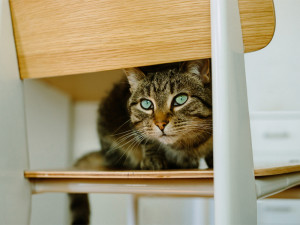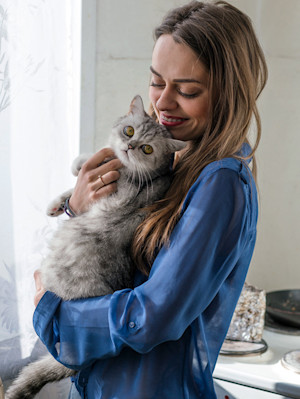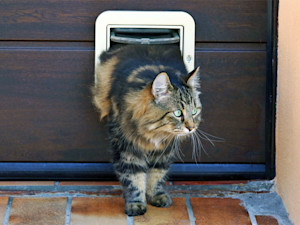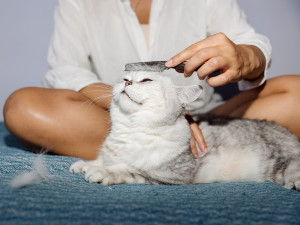How To Create a Cat-Safe Garden
Green fingers at the ready

Share Article
It was originally believed that cats first started cohabiting with humans back in Ancient Egypt, however a more recent DNA studyopens in a new tab suggests that cats have been living alongside us since the Stone Age, yet nothing has really changed with regards to their natural exploring, hunting, climbing and territory-patrolling tendencies. As a veterinary nurse, I know that giving our feline friends the opportunity to act out these natural behaviours outside of our homes can promote emotional and physical health. The issue we now have is that historic cats’ wide open plains of desert with vast home ranges have shrunk down to urban living with tiny little matchbox gardens where cats’ territories overlap and risks of injury are escalated.
In the UK, 70 percent of cats live an indoor/outdoor lifestyle, but if you have a kitty who prefers to stay close to home or you’d rather they didn’t wander, there are plenty of ways you can create a cat-friendly garden. So, if you were planning a trip to Kew Gardens or the Chelsea Flower Show, maybe now you have your excuse.

littleKin™ is Kinship’s home just for puppy and kitten parents. Bop over to check out expert advice, new pet tools, and special deals—all curated for your newest family member.
opens in a new tabGet into the mind of a cat
The outside space you have available will influence how creative you can be with your cat garden. First, put yourself in your cat’s paws and walk around the space, thinking about what they might need to keep them occupied but safe. When cats are exploring they tend to avoid wide open spaces like large areas of lawn or concrete yards, choosing to stick to areas that hide them like woodland and hedgerows – cats are known to take the safest route and not the quickest.
Can we make our gardens secure for cats?
Keeping cats within the confines of a garden is good for cat parents who need to know where their cats are at all times for safety or health reasons, or who may just feel uncomfortable about the dangers posed to roaming cats.
Garden boundary fencing can prevent cats escaping while also keeping other cats out (check with your neighbours first). The common options available are invert and overhang fences, which stop the cats from going higher as they cannot bend their spines in a concave shape. Fencing brand Protect a Petopens in a new tab, for instance, uses metal brackets that have mesh netting attached that will not support a cat’s weight.
Another option, Oscillot, uses rotating polesopens in a new tab that will spin when a cat touches them. Both of these options will come at a cost, however if you are feeling creative and on a budget, a DIY versionopens in a new tab may be just as effective.
If your garden covers a vast area, you could also potentially break up the space into a smaller area that’s easier and less expensive to secure. Be savvy, be creative, you may be surprised at what you can come up with.
How to make your garden a fun place for cats to explore
Always think three-dimensionally when it comes to cats, especially in terms of climbing. Look around and think about their options for getting up to various heights, whether this is from wooden posts, fences, garden sheds, tree branches or shelving on fences. Some ways to make your garden exciting include:
Cutting large trees to create a trunk or branch perch your cat can use as a scratch post or resting point.
Planting shrubs or trees that weep and offer seclusion but also act as a moving target when it’s windy. There’s a great list of options on Nurseries Onlineopens in a new tab.
Providing different textures for your cat to experience like soil, wood, concrete, grass, sand, bark and slabs.
Using hedges, shrubs, trellis, stone walls, trees and pot plants to give areas of safety and seclusion.
Giving options for shade, shelter and sunbathing, so that your cat can enjoy the space whatever the weather.
Adding some garden furniture – as well as being a ready-made climbing frame, it’s also an area to encourage social interaction with humans.
Providing them with a purpose-built cat house that offers shelter and safety, especially if you don’t have a catflapopens in a new tab in place.
Within the space, giving them the opportunity to perform predatory behaviouropens in a new tab. You could provide this with realistic wand toys that you drag through grass or scatter food over the lawn to encourage foraging. (Always remember that leftover food can attract unwanted visitors.)
Having some plant pots scattered around to allow for scent marking, which is important when cats are trying to map their territoryopens in a new tab to feel safe.
Think of the route that your cat is taking to enter the outdoor space. A cat will always enter into a new space tentatively and so it is vital that they don’t feel too exposed. They need the opportunity to scan their territory to know whether it’s safe to proceed. So with this in mind, offer hiding options next to their exit – large potted plants are perfect for this.
Which plants are safe/unsafe for cats?
When looking at the list of plants toxic to cats, don’t have a meltdown; there are lots of familiar garden varieties on there: clematis, daffodil, rhododendron, foxglove, crocus… all things that we often have popping up in our gardens. However, most of these taste bad to cats and so are unlikely to be eaten in large quantities. Some plants may cause skin irritations, so it is advised that you do some research to check which ones you may need to be mindful of.
International Cat Care offers an extensive list of indoor and outdoor plants that are poisonousopens in a new tab to cats. Liliesopens in a new tab are the most well-known poisonous plant for cats and so should definitely not be grown in your garden.
So are there any plants that are safe and that cats might actually like? The main ones that you might want to consider planting are catnip, cat mint and cat grass.
Are there pet-friendly weed killers?
Any hazardous chemicals should be avoided if they can come into contact with animals and children. It is advisable that you avoid pesticides, fertilisers or chemicals that are harmful if ingested. Please always follow the manufacturer’s instructions and be mindful that even the ‘safer’ options may only be harmless once dryopens in a new tab. Baking soda and vinegar has been claimed to be effective, so always consider an organic way first.
Here are some recommended safe options.
Other factors to consider
Ensure you check the garden for any sharp objects, garden tools, thorny plants and broken furniture that may cause injury. If your cat has access to other outbuildings like sheds and garages, ensure any chemicals are secure and no containers are leaking. This is especially so during the colder months as ethylene glycol (anti-freeze)opens in a new tab is fatal to cats if ingested.
If you want to try and encourage your feline to go to the toilet outside, then you could consider making an outside toileting site. Choose an area that is secluded, maybe under a hedge or some shrubs. Dig a hole and fill with gravel, then top with fine dry sand. Initially, you may have to mix in your normal litter tray substrate so that is recognisable to them. It will have to be scooped like indoors. Some cats may just find their own favoured spot, whether that’s somewhere with compost, bark or freshly dug soil. If it’s soft and they can dig they will be happy.
Cats will love the opportunity to relax and observe within their garden so it will be all about whether you can balance safety with enrichment.

Zoe Blake RVN, ISFMCertFN / AdvCertFB, MISAP
Zoe is a registered veterinary nurse and has been in the profession for over 30 years. She enjoys educating pet owners on all aspects of their care and regularly writes to support her work. When she is not chatting animals, she can be found running around the tennis court or exploring the countryside with her rescue dog, Dylan.
Related articles
![Cat chewing on cat grass]() opens in a new tab
opens in a new tab8 Pet-Safe Plants Your Cat Can Veg Out On
Cats love the crunch of a houseplant. These ones will do them no harm
![Cat sitting on a kitchen chair, looking at the camera]() opens in a new tab
opens in a new tabHow to Kitten-Proof Your House
A cat behaviourist’s 10 steps for keeping your cat out of trouble
![a woman hugging her cat with blonde hair]() opens in a new tab
opens in a new tabHow Much Does A Cat Cost?
Not sure if you can afford to bankroll a new cat for the rest of its life? Check out our comprehensive guide for all the costs involved
![A tabby cat exiting a cat flap]() opens in a new tab
opens in a new tabMicrochip Cat Flaps: Unlocking the Secrets
Give your cat a key to the outside world
![A woman brushes a cat's hair.]() opens in a new tab
opens in a new tabThe Best Way to Get Rid of Fleas On Cats, According to a Vet
Break the cycle before it gets worse... trust us
